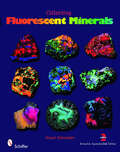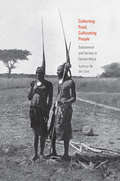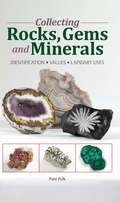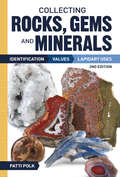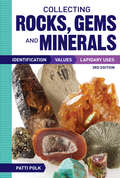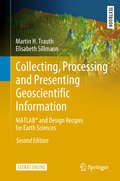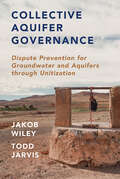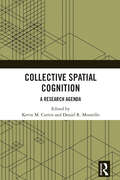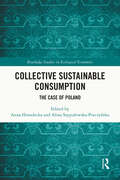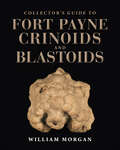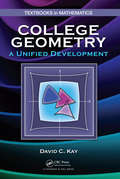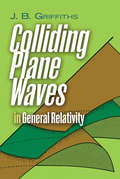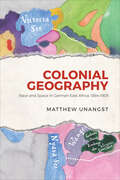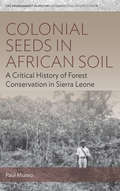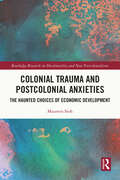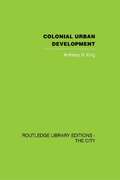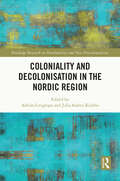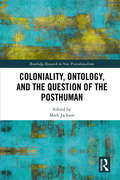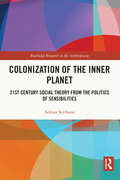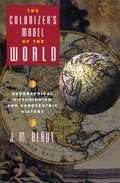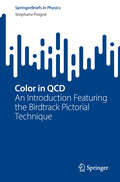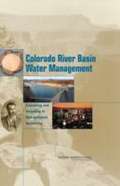- Table View
- List View
Collecting Fluorescent Minerals
by Stuart SchneiderSeeing fluorescent minerals up close for the first time is an exciting experience. The colors are so pure and the glow is so seemingly unnatural, that it is hard to believe they are natural rocks. Hundreds of glowing minerals are shown, including Aragonite, Celestine, Feldspar, Microcline, Picropharmacolite, Quartz, Spinel, Smithsonite, plus many more. But don't let the hard-to-pronounce names keep you away. Over 870 beautiful color photographs illustrate how fluorescent minerals look under UV light and in daylight, making this an invaluable field guide. Here are minerals from the United States, including mines in New Jersey, New York, Arizona, and California, as well as beautiful and unusual minerals from Canada, Mexico, Greenland, Italy, Sweden, and other places. Included are values, a comprehensive resources section, plus helpful advice on caring for, collecting, and displaying minerals. The field of collecting fluorescent minerals is relatively new and this is one of the most complete references available.
Collecting Food, Cultivating People: Subsistence and Society in Central Africa
by Kathryn M. de LunaA rich analysis of the complex dynamic between food collection and food production in the farming societies of precolonial south central Africa Engaging new linguistic evidence and reinterpreting published archaeological evidence, this sweeping study explores the place of bushcraft and agriculture in the precolonial history of south central Africa across nearly three millennia. Contrary to popular conceptions that place farming at the heart of political and social change, political innovation in precolonial African farming societies was actually contingent on developments in hunting, fishing, and foraging, as de Luna reveals.
Collecting Rocks, Gems & Minerals: Identification, Values, Lapidary Uses (Warman's Field Guide Ser.)
by Patti PolkThree Guides in One! Identification, Values, Lapidary UsesDesigned with beginners in mind, yet filled with valuable technical information for advanced collectors, Collecting Rocks, Gems and Minerals takes you from being just someone who appreciates rocks to a true "collector."Easy-to-use, quick reference format arranged by category and color of stoneCovers both lapidary and mineral display materialsProvides values and tips for locating, buying and collectingIncludes organics such as amber, bone, coral, pearl and shellLists chemical group, system, hardness, opacity, fracture, specific gravity and moreContains more than 650 full-color photosForeword by Johann Zenz, world renowned agate expert, author and lecturer
Collecting Rocks, Gems and Minerals: Identification, Values and Lapidary Uses (Warman's Field Guide Ser.)
by Patti PolkUnlike the dense and highly technical academic tomes that are text-heavy, poorly organized and intimidating, this colorful and easy-to-use reference guide dedicated to collecting rocks, gems and minerals is ideal for readers who want to expand their understanding without getting lost in a labyrinth of science. Beautifully illustrated with 700 color photographs providing wonderful detail and smartly organized to take the hassle out identification, you will enjoy the simplicity of the guide and the enthusiasm and knowledge of author Patti Polk, one of the top agate collectors in the world and a self-proclaimed "rockhound." You will also enjoy two areas that our competitors don't bother with. First it includes values, and second, it covers an introduction to lapidary, which is the cutting and polishing of rocks and gemstones for jewelry or display.
Collecting Rocks, Gems and Minerals: Identification, Values and Lapidary Uses (Warman's Field Guide Ser.)
by Patti PolkUnlike the dense and highly technical academic tomes that are text-heavy, poorly organized and intimidating, this colorful and easy-to-use reference guide dedicated to collecting rocks, gems and minerals is ideal for readers who want to expand their understanding without getting lost in a labyrinth of science. Beautifully illustrated with 700 color photographs providing wonderful detail and smartly organized to take the hassle out identification, you will enjoy the simplicity of the guide and the enthusiasm and knowledge of author Patti Polk, one of the top agate collectors in the world and a self-proclaimed "rockhound." You will also enjoy two areas that our competitors don't bother with. First it includes values, and second, it covers an introduction to lapidary, which is the cutting and polishing of rocks and gemstones for jewelry or display.
Collecting, Processing and Presenting Geoscientific Information: How To Collect, Process And Present Geoscientific Information (Springer Textbooks in Earth Sciences, Geography and Environment)
by Martin H. Trauth Elisabeth SillmannThis second edition is an intensively revised and updated version of the book MATLAB® and Design Recipes for Earth Sciences. It aims to introduce students to the typical course followed by a data analysis project in earth sciences. A project usually involves searching relevant literature, reviewing and ranking published books and journal articles, extracting relevant information from the literature in the form of text, data, or graphs, searching and processing the relevant original data using MATLAB, and compiling and presenting the results as posters, abstracts, and oral presentations using graphics design software. The text of this book includes numerous examples on the use of internet resources, on the visualization of data with MATLAB, and on preparing scientific presentations. As with the book MATLAB Recipes for Earth Sciences–4rd Edition (2015), which demonstrates the use of statistical and numerical methods on earth science data, this book uses state-of-the art software packages, including MATLAB and the Adobe Creative Suite, to process and present geoscientific information collected during the course of an earth science project. The book's supplementary electronic material (available online through the publisher's website) includes color versions of all figures, recipes with all the MATLAB commands featured in the book, the example data, exported MATLAB graphics, and screenshots of the most important steps involved in processing the graphics.
Collective Aquifer Governance: Dispute Prevention for Groundwater and Aquifers through Unitization
by Todd Jarvis Jakob WileyCurrent models of groundwater governance focus principally on the allocation of water, rather than taking a holistic approach incorporating valuable storage space in the aquifer, as well as the transformative changes in managed recharge of manufactured water, storm water, and carbon. Effective implementation of a more modern approach now calls for rethink of both scale and jurisdictional boundaries. This involves linking public and private aspects of water quantity, water quality, geothermal regulation, property rights, subsurface storage rights, water marketing, water banking, legal jurisdictions, and other components into a single governance document. This style of agreement stands in contrast to the siloed approach currently applied to aquifer resources. Using case studies, and an activity inspired by gaming concepts to explore the incentives, and challenges to aquifer governance approaches, this book demonstrates how application of the principles of unitization agreements to aquifers could provide a new approach to aquifer governance models.
Collective Learning for Transformational Change: A Guide to Collaborative Action
by Valerie A. Brown Judith A. LambertThe drive for change has informed human endeavour throughout history. From fields to factories to offices, people have always asked how to make things better. This innovative book offers a step by step guide for recognising the need for transformational change and kick-starting a course of implementation that leads to the creation of a productive, just and sustainable future for the given community. Drawing on over 300 cases of transformational change planned-for and supported through the process of collective learning, the book shows how a collective learning model based on open learning among diverse interests can improve communication and achieve lasting system change. Part one of the book outlines the theory and practice of collective learning, drawing on the experiential learning cycle developed by David Kolb. The practice follows the rules of open space learning, dialogue and valuing diversity and is flexible, allowing adaptation to different situations. Case studies in Part two provide examples of collective learning leading to transformational change in a wide range of contexts, from cities to councils to organisations. Part three offers thirty-three activities on which the programme designers can draw in the course of guiding transformational change, from team building, to community development, monitoring, evaluation and cross-cultural learning This guidebook differs from the traditional management of change. Not only does the process begin with sharing ideals, only later proceeding to implementation, but it also actively harnesses the full set of interests in planning direct action, seeking constructive collaboration not consensus. This groundbreaking guidebook is designed to be fun, accessible and engaging for both students and professionals in the fields of administration and governance.
Collective Spatial Cognition: A Research Agenda
by Daniel R. Montello Kevin M. CurtinThis book integrates the science of spatial cognition and the science of team cognition to explore the social, psychological, and behavioral phenomenon of spatial cognition as it occurs in human collectives such as dyads and work teams. It represents the culmination of a process of outlining and defining a growing field of research termed Collective Spatial Cognition. It engages contributions from an international and multi-disciplinary community of scholars, who have collaborated to provide a foundation for knowledge discovery regarding how groups of people of varying size acquire information and solve problems involving spatiality as a key component, leading to action that incorporates the spatial information and problem-solving collectively achieved. The collectives under study can be as small as dyads (teams of two) to large teams-of-teams who are working alongside each other to complete a mutual goal. The book lays the foundation for multi- and interdisciplinary work regarding Collective Spatial Cognition in the years to come, and this book documents that foundation. This book will be of interest to those researching spatial, behavioural, cognitive, and information sciences in the fields of human geography, sociology, psychology, and computer science.
Collective Spatial Cognition: A Research Agenda
by Daniel R. Montello Kevin M. CurtinThis book integrates the science of spatial cognition and the science of team cognition to explore the social, psychological, and behavioral phenomenon of spatial cognition as it occurs in human collectives such as dyads and work teams.It represents the culmination of a process of outlining and defining a growing field of research termed Collective Spatial Cognition. It engages contributions from an international and multi-disciplinary community of scholars, who have collaborated to provide a foundation for knowledge discovery regarding how groups of people of varying size acquire information and solve problems involving spatiality as a key component, leading to action that incorporates the spatial information and problem-solving collectively achieved. The collectives under study can be as small as dyads (teams of two) to large teams-of-teams who are working alongside each other to complete a mutual goal. The book lays the foundation for multi- and interdisciplinary work regarding Collective Spatial Cognition in the years to come, and this book documents that foundation.This book will be of interest to those researching spatial, behavioural, cognitive, and information sciences in the fields of human geography, sociology, psychology, and computer science.
Collective Sustainable Consumption: The Case of Poland (ISSN)
by Anna Horodecka Alina Szypulewska-PorczyńskaIn the face of climate change and resulting environmental and social crises, sustainable consumption has become a widely discussed issue and a key plank of the UN’s Sustainable Development Goals (SDGs). The majority of the sustainable consumption research uses the SDG framework, but this only serves to reinforce an individualistic, efficiency-based approach and it does not sufficiently cover the specific situation of transition economies. In contrast, this volume promotes a collective approach to sustainable consumption, and combines general theoretical issues with empirical examples from the Polish economy. The first part of the book presents a theoretical approach to collective consumption which has the core concepts of justice and human nature at its heart. This approach emphasises the role of collective rationality and categorises aspects of sustainable consumption as a common and public good. The second part investigates diversified aspects of sustainability, including socio-economic inequalities as barriers to sustainable consumption, consumer sovereignty in the context of current legal regulations, and the impact on employees of changes to the types and conditions of work. It also examines the sharing economy and the legal conditions of its development. The third part adopts a political perspective focusing on the state policies enhancing the role of investment in public goods, analyses photovoltaic programmes which promote prosumption and indicates challenges to sustainability faced by many countries such as the energy crisis, sustainable finance, and cooperative platforms.This book will be of great interest to researchers and scholars interested in sustainability and consumption issues in economics, management, law, public administration, and political science.
Collector's Guide to Fort Payne Crinoids and Blastoids (Life of the Past)
by William MorganCollector's Guide to Fort Payne Crinoids and Blastoids is the first comprehensive guide for identifying the fossils of echinoderms from hundreds of millions of years ago, when North America was covered by a warm, equatorial sea.Crinoids and blastoids, echinoderms (the same family of marine animals to include starfish, sea urchins, and sand dollars) from the Fort Payne Formation in Kentucky, are rarely seen at gem, mineral, and fossil shows, nor are they regularly displayed at major museums. By combining high-quality color photographs and an accompanying descriptive text, William W. Morgan provides the first comprehensive identification guide to these fascinating fossils. Collector's Guide to Fort Payne Crinoids and Blastoids features photographs, often offering more than one view, of the best-quality specimens curated in the Smithsonian and other prominent invertebrate fossil museums. Morgan includes photographs that are unlabeled so that readers can test themselves to see whether they can differentiate some of the more subtle features that may be necessary for accurate identification.
College Geometry: A Unified Development (Textbooks in Mathematics)
by David C. KayDesigned for mathematics majors and other students who intend to teach mathematics at the secondary school level, College Geometry: A Unified Development unifies the three classical geometries within an axiomatic framework. The author develops the axioms to include Euclidean, elliptic, and hyperbolic geometry, showing how geometry has real and far-
Colliding Plane Waves in General Relativity (Dover Books on Physics)
by J. B. GriffithsThis monograph surveys recent research on the collision and interaction of gravitational and electromagnetic waves. "This is a particularly important topic in general relativity," the author notes, "since the theory predicts that there will be a nonlinear interaction between such waves." Geared toward graduate students and researchers in general relativity, the text offers a comprehensive and unified review of the vast literature on the subject.The first eight chapters offer background, presenting the field equations and discussing some qualitative aspects of their solution. Subsequent chapters explore further exact solutions for colliding plane gravitational waves and the collision and interaction of electromagnetic waves. The final chapters summarize all related results for the collision of plane waves of different types and in non-flat backgrounds. A new postscript updates developments since the book's initial 1991 publication.
Colonial Geography: Race and Space in German East Africa, 1884–1905 (German and European Studies)
by Matthew UnangstColonial Geography charts changes in conceptions of the relationship between people and landscapes in mainland Tanzania during the German colonial period. In German minds, colonial development would depend on the relationship between East Africans and the landscape. Colonial Geography argues that the most important element in German imperialism was not its violence but its attempts to apply racial thinking to the mastery and control of space. Utilizing approaches drawn from critical geography, the book argues that the development of a representational space of empire had serious consequences for German colonialism and the population of East Africa. Colonial Geography shows how spatial thinking shaped ideas about race and empire in the period of New Imperialism.
Colonial Seeds in African Soil: A Critical History of Forest Conservation in Sierra Leone (Environment in History: International Perspectives #18)
by Paul Munro“Empire forestry”—the broadly shared forest management practice that emerged in the West in the nineteenth century—may have originated in Europe, but it would eventually reshape the landscapes of colonies around the world. Melding the approaches of environmental history and political ecology, Colonial Seeds in African Soil unravels the complex ways this dynamic played out in twentieth-century colonial Sierra Leone. While giving careful attention to topics such as forest reservation and exploitation, the volume moves beyond conservation practices and discourses, attending to the overlapping social, economic, and political contexts that have shaped approaches to forest management over time.
Colonial Trauma and Postcolonial Anxieties: The Haunted Choices of Economic Development (Routledge Research on Decoloniality and New Postcolonialisms)
by Maureen SiohColonial Trauma and Postcolonial Anxieties argues that economic decisions reflect unconscious anxieties about survival and dignity experienced in a cycle of repeat trauma tracing back to the original trauma of loss in colonialism.Readers will understand how emerging economies evaluate the costs and benefits of key economic policies in the postcolonial era using a psychoanalytical framework.While there are psychoanalytic studies of the economy and finance from a western perspective, there have been no sustained psychoanalytic studies from the perspective of East Asian economies, the fastest growing in the world. Scholars will also find the methodology combining archival research with and field studies, including rare interviews with senior decision-makers useful in their own research since it is rare to find studies of social theory that are empirically rich.This book will be of interest to policymakers and scholars of political economy, international development, human geography, postcolonial studies, psychoanalysis, and area studies (Southeast and East Asia). The book can also be used as a text for graduate and upper level university courses.
Colonial Urban Development: Culture, Social Power and Environment
by Anthony D. KingThe Study focuses on the social and, more especially, the cultural processes governing colonial urban development and develops a theory and methodology to do this. The author demonstrates how the physical and spatial arrangements characterizing urban development are unique products of a particular society, to be understood only in terms of its values, behaviour and institutions and the distribution of social and political power within it. Nowhere is this more apparent than in 'colonial cities' of Asia and Africa where the environmental assumptions of a dominant, industrializing Western power were introduced to largely 'pre-industrial' societies. Anthony King draws his material primarily from these areas, and includes a case study of the development of colonial Delhi from the early nineteenth century to 1947. Yet, as the author explains, the problems of how cultural social and political factors influence the nature of environments and how these in turn affect social processes and behaviour, are of global significance. This book was first published in 1976.
Colonialism, Han, and the Transformative Spirit
by Grace Ji-Sun KimGlobalism, colonialism, and consumerism have caused unjust suffering (han), for the earth's exploited peoples and the exploited lands. To reverse this tragedy, we need to work for a safer, sustainable planet and renew our inspiration from God as the transforming Spirit who gives, sustains and empowers life to all.
Coloniality and Decolonization in the Nordic Region (Routledge Research on Decoloniality and New Postcolonialisms)
by Julia Suárez-Krabbe Adrián GroglopoThis book advances critical discussions about what coloniality, decoloniality, and decolonisation mean and imply in the Nordic region. It brings together analysis of complex realities from the perspectives of the Nordic peoples, a region that is often overlooked in current research, and explores the processes of decolonisation that are taking place in this region. The book offers a variety of perspectives that engage with issues such as Islamic feminism and the progressive left; racialisation and agency among Muslim youths; indigenising distance language education for Sami; extractivism and resistance among the Sami; the Nordic international development endeavour through education; Swedish TV reporting on Venezuela; creolizing subjectivities across Roma and non-Roma worlds and hierarchies; and the whitewashing and sanitisation of decoloniality in the Nordic region. As such, this book extends much of the productive dialogue that has recently occurred internationally in decolonial thinking but also in the areas of critical race theory, whiteness studies, and postcolonial studies to concrete and critical problems in the Nordic region. This should make the book of considerable interest to scholars of history of ideas, anthropology, sociology, cultural studies, postcolonial studies, international development studies, legal sociology, and (intercultural) philosophy with an interest in coloniality and decolonial social change.
Coloniality, Ontology, and the Question of the Posthuman (Routledge Research in New Postcolonialisms)
by Mark JacksonThis book brings together emerging insights from across the humanities and social sciences to highlight how postcolonial studies are being transformed by increasingly influential and radical approaches to nature, matter, subjectivity, human agency, and politics. These include decolonial studies, political ontology, political ecology, indigeneity, and posthumanisms. The book examines how postcolonial perspectives demand of posthumanisms and their often ontological discourses that they reflexively situate their own challenges within the many long histories of decolonised practice. Just as postcolonial research needs to critically engage with radical transitions suggested by the ontological turn and its related posthumanist developments, so too do posthumanisms need to decolonise their conceptual and analytic lenses. The chapters' interdisciplinary analyses are developed through global, critical, and empirical cases that include: city spaces and urbanisms in the Global North and South; food politics and colonial land use; cultural and cosmic representation in film, theatre, and poetry; nation building; the Anthropocene; materiality; the void; pluriversality; and, indigenous world views. Theoretically and conceptually rich, the book proposes new trajectories through which postcolonial and posthuman scholarships can learn from one another and so critically advance.
Colonization of the Inner Planet: 21st Century Social Theory from the Politics of Sensibilities (Routledge Research in the Anthropocene)
by Adrian ScribanoThis book explores the conquest, predation and management of human bodies and emotions by the growing capitalist digital community. It seeks to understand the debate between various forms of the individual, subject, actor, and agent to emerge a social theory vision for the 21st century. The book moves beyond the colonization of the physical world to examine the process of colonization of humans. It focuses on the communication humans have with the world to understand how this impacts their sensibilities. This communication is influenced by technological innovations that enable a process of systematic colonization of human beings as bodies/emotions. This book explores a social theory which will allow us to understand this redefinition of the individual. This enables us to uncover connections between the colonization of the ‘inner planet’ that is the human society, and the dialectic of the person and the politics of their sensibilities. This is explored through the tensions that arise between the forms a person assumes in unequal and diverse cultural contexts and the emotions behind those cultural differences. The book will appeal to academics and postgraduate students of sociology, philosophy and anthropology, as well as psychologists, organizational specialists, linguists, ethnographers, historians, political scientists, administrators and professionals affiliated with NGOs.
Colonizer's Model of the World
by J. M. BlautThis book challenges one of the most pervasive and powerful beliefs of our time concerning world history and world geography. This is the doctrine of European diffusionism, the belief that the rise of Europe to modernity and world dominance is due to some unique European quality of race, environment, culture, mind, or spirit, and that progress for the rest of the world results from the diffusion of European civilization. J.M. Blaut persuasively argues that this doctrine is not grounded in the facts of history and geography, but in the ideology of colonialism. It is the world model which Europeans constructed to explain, justify, and assist their colonial expansion. The book first defines the Eurocentric diffusionist model of the world as one that invents a permanent world core, an "Inside," in which cultural evolution is natural and continuous, and a permanent periphery, and "Outside," in which cultural evolution is mainly an effect of the diffusion of ideas, commodities, settlers, and political control from the core. The ethnohistory of the doctrine is traced from its 16th-century origins, through its efflorescence in the period of classical colonialism, to its present form in theories of economic development, modernization, and new world order. Blaut demonstrates that most "Western" scholarship is to some extent diffusionist and based implicitly in the idea that the world has one permanent center from which culture-changing ideas tend to emanate. Eurocentric diffusionism has shaped our attitudes concerning race and the environment, psychology and society, technology and politics.
Color in QCD: An Introduction Featuring the Birdtrack Pictorial Technique (SpringerBriefs in Physics)
by Stéphane PeignéThis book introduces readers to the fascinating world of quantum chromodynamics (QCD) and quarks and gluons, the elementary constituents of protons, neutrons, and all hadrons. Specifically, it focuses on the color of quarks and gluons, responsible for their mutual interactions via the strong force. The book provides an elementary introduction to the birdtrack technique, which is a powerful tool for addressing the color structure of QCD in a pictorial way. The technique shows how quark and gluon colors are combined and mixed in QCD. The author discusses color conservation, shows how to project on color states of systems of quarks, antiquarks, and gluons, how to derive their color charges. The book is enriched with many exercises integrated in the text to learn by doing.This book is primarily intended for particle physics students, graduates, and researchers working in the field of QCD. However, it requires no specific prerequisites in QCD, so it may also be of interest to students of mathematics, as an illustration of the use of the birdtrack pictorial technique in representation theory.
Colorado River Basin Water Management: Evaluating and Adjusting to Hydroclimatic Variability
by National Research Council of the National AcademiesRecent studies of past climate and streamflow conditions have broadened understanding of long-term water availability in the Colorado River, revealing many periods when streamflow was lower than at any time in the past 100 years of recorded flows. That information, along with two important trends--a rapid increase in urban populations in the West and significant climate warming in the region--will require that water managers prepare for possible reductions in water supplies that cannot be fully averted through traditional means. Colorado River Basin Water Management assesses existing scientific information, including temperature and streamflow records, tree-ring based reconstructions, and climate model projections, and how it relates to Colorado River water supplies and demands, water management, and drought preparedness. The book concludes that successful adjustments to new conditions will entail strong and sustained cooperation among the seven Colorado River basin states and recommends conducting a comprehensive basinwide study of urban water practices that can be used to help improve planning for future droughts and water shortages.
